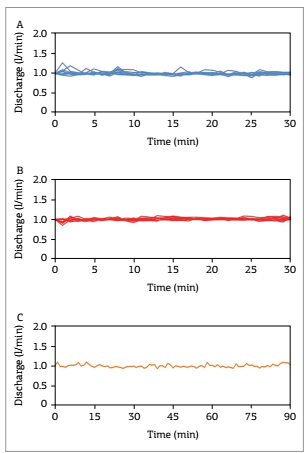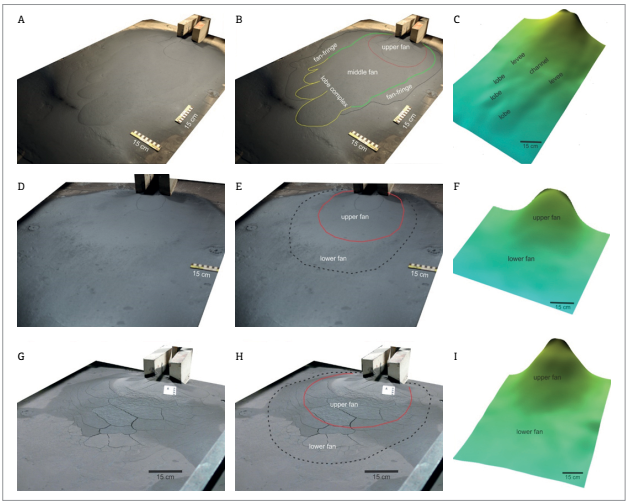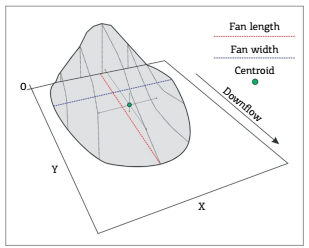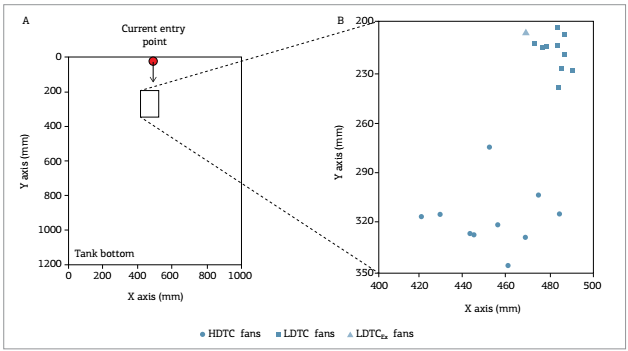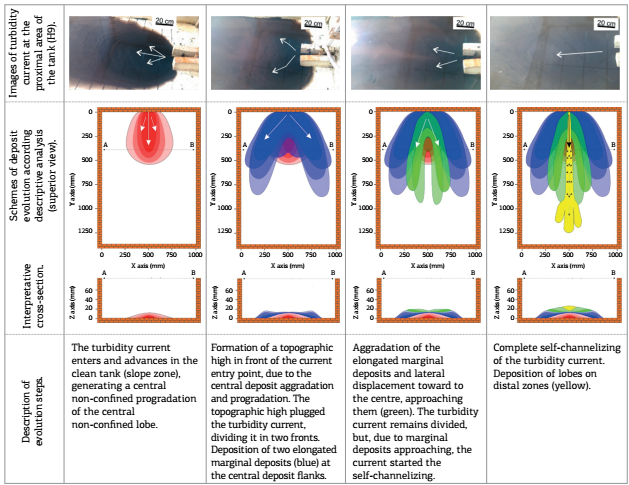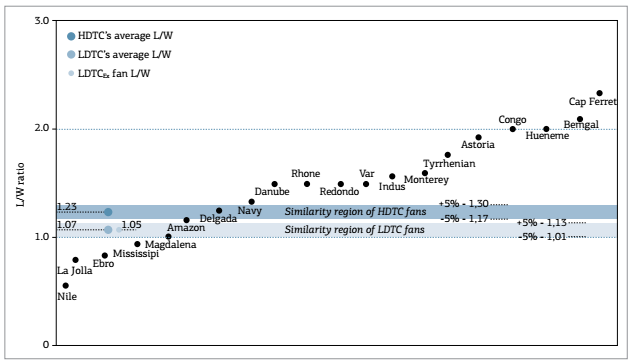ABSTRACT:
Autogenic controls have significant influence on deep-water fans and depositional lobes morphology. In this work, we aim to investigate autogenic controls on the topography and geometry of deep-water fans. The influence of the sediment concentration of turbidity currents on deep-water fans morphology was also investigated. From the repeatability of 3D physical modeling of turbidity currents, two series of ten experiments were made, one of high-density turbidity currents (HDTC) and another of low-density turbidity currents (LDTC). All other input parameters (discharge, sediment volumetric concentration and grain size median) were kept constant. Each deposit was analyzed from qualitative and quantitative approaches and statistical analysis. In each experimental series, the variability of the morphological parameters (length, width, L/W ratio, centroid, area, topography) of the simulated deep-water fans was observed. Depositional evolution of the HDTC fans was more complex, showing four evolutionary steps and characterized by the self-channelizing of the turbidity current, while LDTC fans neither present self-channelizing, nor evolutionary steps. High disparities on the geometrical parameters of the fans, as characterized by the elevated relative standard deviation, suggest that autogenic controls induced a stochastic morphological behaviour on the simulated fans of the two experimental series.
KEYWORDS:
Autogenic controls; Deep-water fans morphology; Turbidity currents; Physical modeling; Sediment concentration

 Thumbnail
Thumbnail
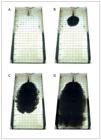 Thumbnail
Thumbnail
 Thumbnail
Thumbnail
 Thumbnail
Thumbnail
 Thumbnail
Thumbnail
 Thumbnail
Thumbnail
 Thumbnail
Thumbnail
 Thumbnail
Thumbnail
 Thumbnail
Thumbnail
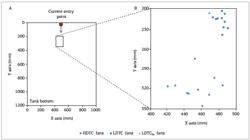 Thumbnail
Thumbnail
 Thumbnail
Thumbnail
 Thumbnail
Thumbnail
 Thumbnail
Thumbnail
 Thumbnail
Thumbnail
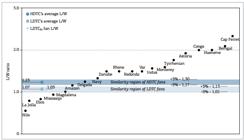 Thumbnail
Thumbnail
 Thumbnail
Thumbnail
 Thumbnail
Thumbnail
 Thumbnail
Thumbnail


